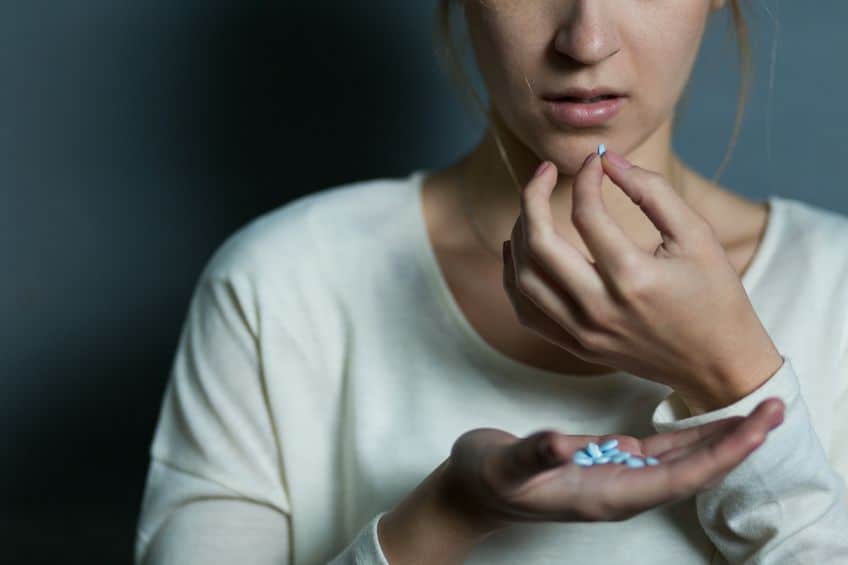
National Pharmacies Attempt to Assist With the Opioid Epidemic
October 12, 2017
Recognizing that there isn’t a neighborhood in the United States that has not been impacted by the opioid epidemic, pharmacies are now taking major steps to address it. Although experts guess over 20 million Americans need addiction treatment and recovery support services immediately, funding for these programs is still being stalled by government officials. Luckily, national pharmacies like Walgreens and CVS are spearheading efforts to educate the public and crack down on painkiller misuse.
Walgreens has launched its “#ItEndsWithUs” campaign to educate teens about opioid safety and the dangers of addiction, which is a great approach at attacking addiction early. Attempts to end the opioid crisis should target teens: studies suggest the earlier we educate teens about addiction, the less likely they are to be addicted later in life. CVS is actually changing policies: now patients new to CVS will only be able to obtain a seven day supply of opioids. They have added other protections, too, such as distributing immediate-release pills before extended-release (which can be more easily abused) and limiting daily dose based on each type of pills’ strength. The fact that these drugstores are taking a stand to challenge the opioid crisis is telling: Families across the US are facing tough choices as their loved ones struggle with addiction. Opioid abuse in teens is an important and timely issue – read on to discover the signs of addiction, and the hope that treatment can bring.
Symptoms of Teen Addiction
 Parents never expect the ramifications of this national epidemic to play out in their own home – but addiction can affect the people you least expect. Teenagers of every race, class, background, and geographic region fall to the grips of addiction. It is important to remember that the disease of addiction is never a parent’s fault or result of bad upbringing. If your teen shows any of these symptoms, it’s best to be honest with him or her, and seek a treatment program that works for your family.
Parents never expect the ramifications of this national epidemic to play out in their own home – but addiction can affect the people you least expect. Teenagers of every race, class, background, and geographic region fall to the grips of addiction. It is important to remember that the disease of addiction is never a parent’s fault or result of bad upbringing. If your teen shows any of these symptoms, it’s best to be honest with him or her, and seek a treatment program that works for your family.
- Changes in behavior. If your child is not acting like him or herself lately, or stops communicating with you, it could be because of the effects of a substance. An article published in Innovations in Clinical Neuroscience reveals changes in mannerism is “one of the earliest warning signs that predicts teenage drug use” .
- Stealing. Unless your child has demonstrated this behavior before, they may be stealing money or other items from the house to earn money for painkillers.
- Changes in personality. Parents who discover drug use in their children often remark that their child began acting differently than the child they raised. Other parents recognize drug use from a familiar behavior pattern: being overly jittery in the morning and calmer in the evening.
- Physical signs of opioid abuse. An individual abusing painkillers may show drowsiness, “pinpoint” pupils, drooping eyes, sudden scratching, slurred speech, intense calmness, and flushed face and neck.
Causes
Recognizing drug abuse in your own child is difficult. It assures some parents to learn that chemistry, not faulty upbringing, is what leads to substance use.
Opioids, though originally groundbreaking and still vital in the field of medicine, are highly addictive. This is because opioid drugs that enter the body increase the amount of dopamine that’s released in the brain. This chemical makes people feel intense pleasure throughout their body – this is known as euphoria. Someone may come back to opioids to experience this euphoria, but their body will also become dependent on taking the drug just to avoid unpleasant withdrawal symptoms.
Treatment
If addiction affects someone you love, know that there are ways to help them. Medication-assisted treatment is an option that works for some individuals – medications like Suboxone are often prescribed to adolescents because of their especially low potential for abuse (https://health.usnews.com/health-care/patient-advice/articles/2017-08-01/battling-opioid-addiction-in-adolescents). Inpatient facilities may use support groups to help teens discuss underlying issues in their lives, from family conflict to mental health concerns. One-on-one therapy will also address these, which can often contribute to the drug abuse itself.
How to Help
Honesty and respect are most important when speaking to your child about potential opioid abuse. Ask direct questions, and then react calmly to his or her answers. Do not let your emotions dictate your reaction – instead, promise that you want to help. Treatment at Hillcrest Adolescent Treatment Center offers supervised detox, therapy, and more and would be happy to meet with your family to discuss options. Contact us to learn more.
